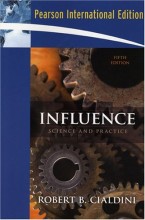Healty aging II
16 important questions on Healty aging II
How do we study the aging brain?
- post-mortem
- neuroimaging techniques (CT, MRI, FMRI, PET, sPET)
Changes in the aging brain?
- brain mass decreases up to 10% in 10th decade
- mass stays relatively stable from age 20
- cerebral cortex loss 0.12% young adults, 0.35% in adults over 52
- Some regions show a steeper decline than others
Brain cavity and cerebrospinal fluid
- between the age of 20-50, brain occupies 90% of skull
- after age 50, takes in less space
-widening of sulci
-increased volume of cerebrospinal fluid
- Higher grades + faster learning
- Never study anything twice
- 100% sure, 100% understanding
Cognitive decline with age
- crystalized pragmatics
- stay mostly the same
- respresentations
- practice
- acces
- decline
- speed
- working, long term, and short term memory
non-verbal test shows no difference between cultures,
verbal test shows differences between cultures
Age related functional activations
- posterior-anterior shift in aging (PASA)
- Hemispheric Asymetry Reduction in OLDer Adults
Posterior anterior shift in aging (PASA)
- decrease activation in posterior areas
- increase activation in anterior areas (involvement of higher order processes)
- adittional reqruitement of higher order functions allow older adults to maintain a good accuracy level, most often at the expense of slower reaction times
Hemispheric Asymmetry Reduction in OLDer Adults (Harold)
- Compensation
-bilateral activation is associated with succesful cognitive performance
-found in high-performing rather than low-performing adults - dedifferentiation account
-more widespread activation reflects an age-related difficulty in engaging specialized neural mechanisms
Evidence for compensation theory in HAROLD
- young adults memory was more affected during rTMS of the dorsolateral prefrontal cortex
- in older adults, it was equally affected. didn't matter if it was left or right
- activation of both hemispheres is useful in memory performance in older adults
PASA and HAROLD in cognitive functions
- visual perception, attention and recognition memory
-age related occipital decrease accompanied by frontal increase
-PASA - working memory, language, memory encoding and retrieval
-age related decrease in hemispheric asymetry
-HAROLD - PASA and HAROLD are different systems and related to different functions
Brain data and cognitive aging theories
- sensory deficit theory
- resources deficit theory
- speed deficit theory
- inhibition theory
- scaffolding theory of aging and cognition
Sensory deficit theory
- age related deficits in sensory processing play major role in age related cognitive decline
- older adults show deficits in:
-simple vision
-auditory processing - strong correlation between age related differences in sensory processing and cognitive performance
- top-down compensates for failing bottom-up
Resource deficit theory
- aging is associated with a reduction in the amount of attentional resources
-deficits in demanding tasks
-deficits are smaller when environment provides support - support: when attentional resources are reduces in younger adults, the tend to show simillar deficits as older adults
- attention relies strongly on the PFC (PreFrontalCortex)
- older adults show decreased activation in PFC that is activated in young adults during attention tasks
- older adults show a more bilateral pattern of PFC during attention tasks
- HAROLD
Speed deficit theory
- older adults cognitive deficits reflect a general reduction in cognitive processing speed
- the time required by early operations reduces time availiable for later operations (Limited time mechanism)
- the products of early operations are lost or irrelevant by the time later operations are completed (simultaneity mechanism)
- one of the more popular cognitive ageing theories
- processing speed declines steadily with age
- caused by the demyelination
Inhibition deficit theory
- age-related cognitive decline is due to a decline in the inhibitory control of working memory contents
-when inhibition fails, irrelevant information gets acces to WM
-results in mental clutter which impairs WM - Older adults remember better:
-disconfirmed solutions
-to-be-forgotten information - differences between inhibition control areas (anterior regions) and areas effected by inhibition (posterior regions)
- older adults show less activity in inhibition control areas
- older adults show greater activities in areas that are supposed to be inhibited
Scaffolding Theory of Aging and Cognition (STAC model)
- the brain must adapt to challenges like atrophy
- brain builds alternative neural circuitry to cope (Scaffolds)
- scaffolds represent compensatory strategies and allow older adults to maintain a high level of activation.
When is performance abnormal?
- age
- level of education
-Ruff figural fluency test' - gender
-emotion recognition task
performance is abnormal when >2 SD below the average
The question on the page originate from the summary of the following study material:
- A unique study and practice tool
- Never study anything twice again
- Get the grades you hope for
- 100% sure, 100% understanding





























